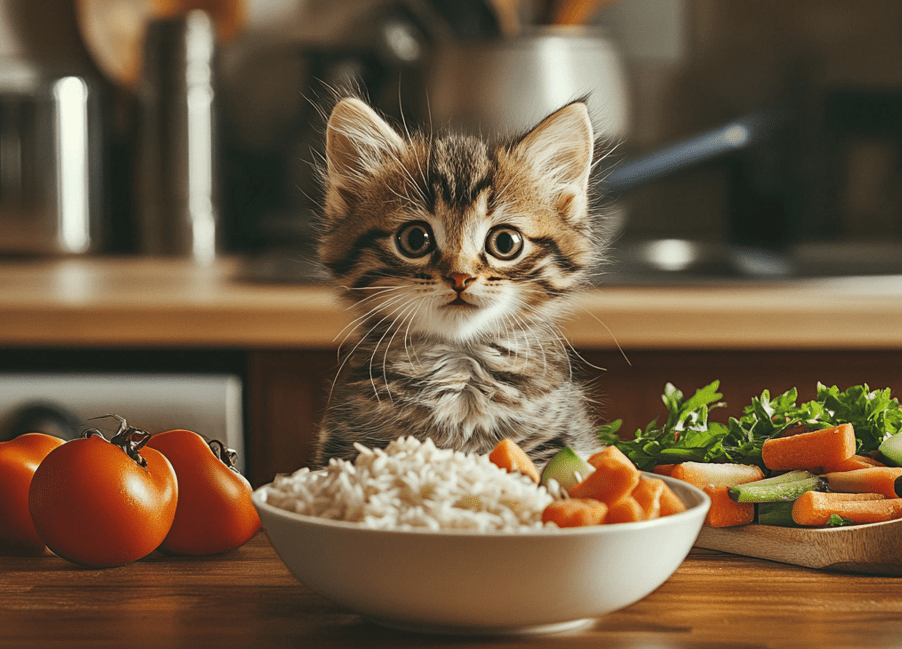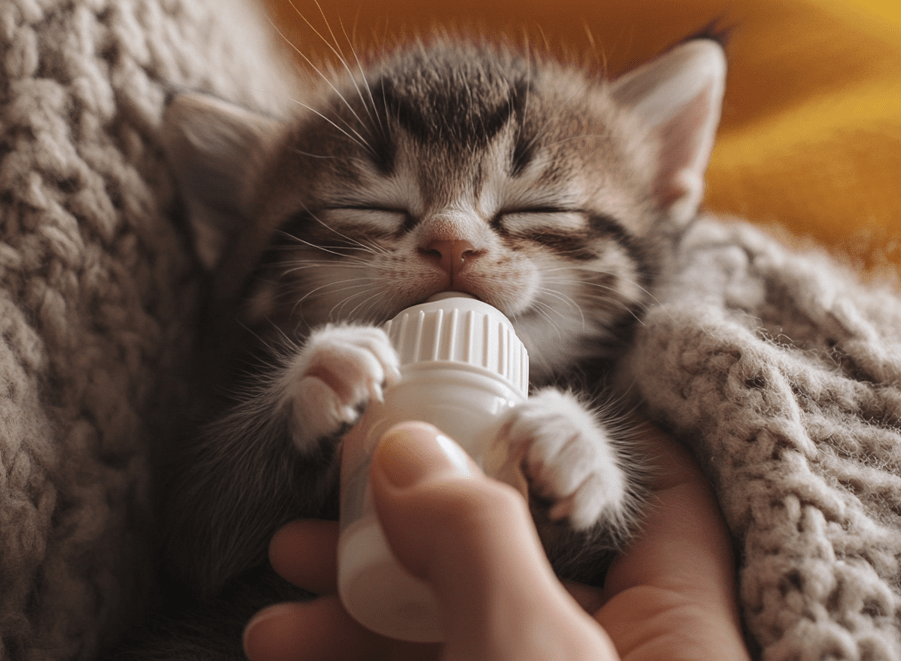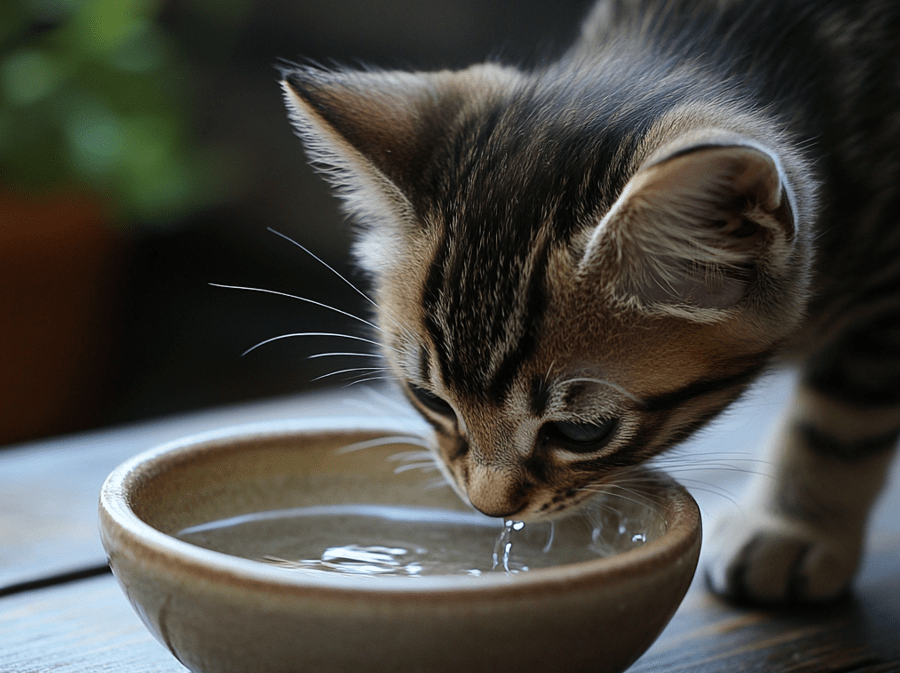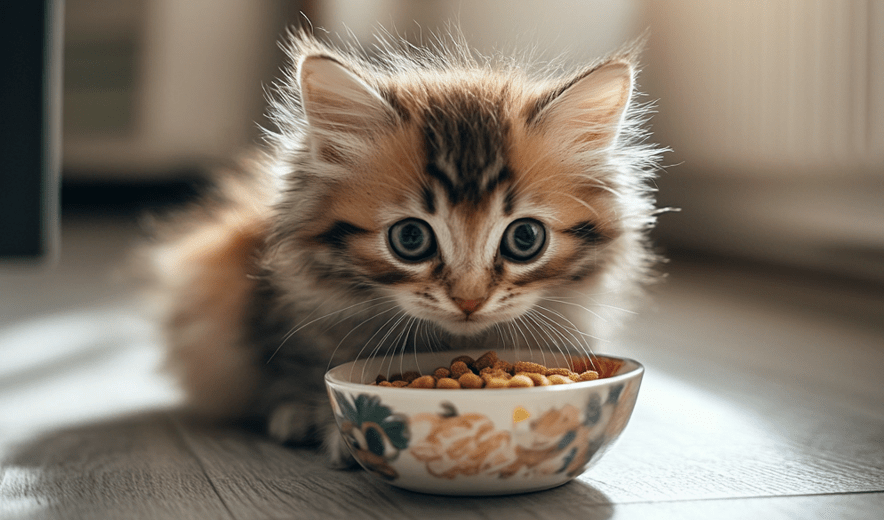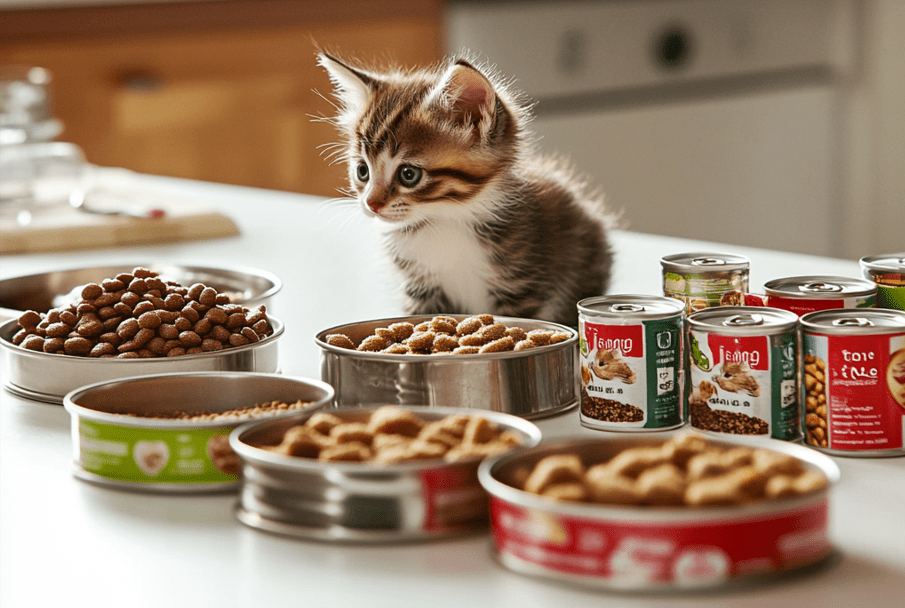
It is a big and very important question about what to feed your kitten. Most pet owners face this question and they are very worried about it. Most of a kitten’s diet should be specially formulated kitten food to help them grow properly. It contains all the necessary nutrients including vitamins, minerals, proteins, calories and fats, especially Omega-3 in quantities higher than those present in adult cat food. By feeding these nutrients you can offer to your new kitten all that they need to have healthy growth bones, eyesight, immunity and tissues.
Most experts recommend switching kittens to a diet of soft, canned food soon after they are weaned, or at 4 to 8 weeks old. They recommend wet, kitten food as it is softer and more pâté-like consistency so that it’s easier for their little digestive systems to break down. Wet dry food is an option, you can give it to your kittens if it’s as early as 4 weeks, others recommend waiting until about 8–10 weeks since they have very small teeth and can sometimes even chew it properly.
To watch the summary of this article, just watch this video-
Essential Kitten Feeding Guide
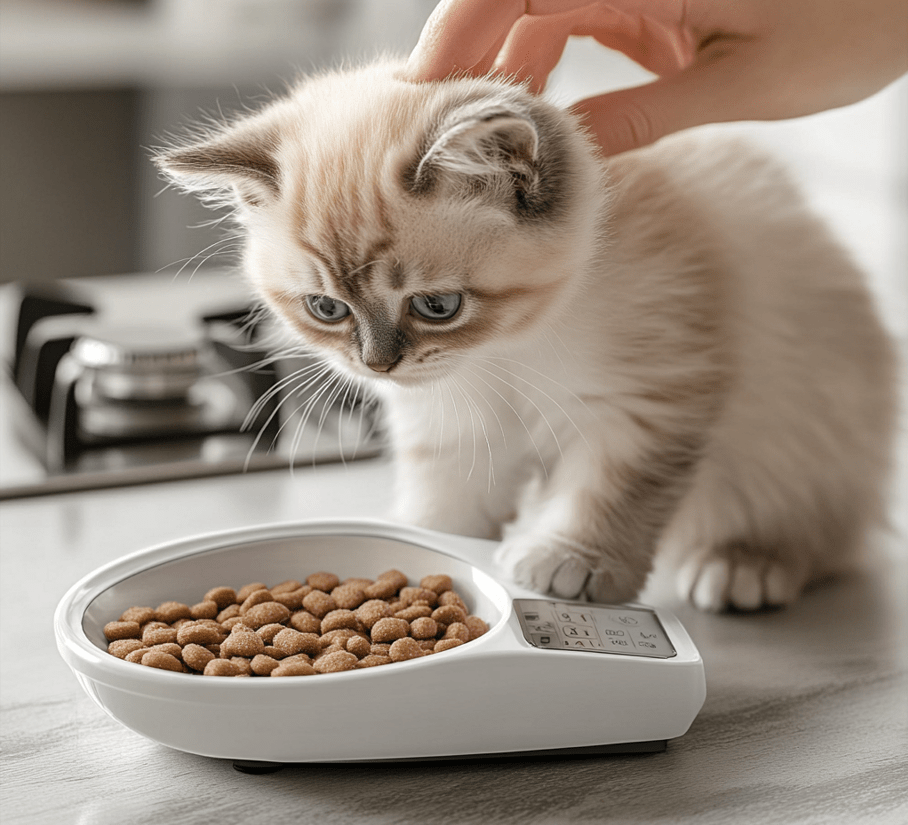
There are many things to consider, but health begins with good nutrition as a kitten. If feeding wet food 2–4 times per day, an 8-week-old kitten should eat about 200-250 grams per day. That said, feeding kittens is a bit complex because not all kittens are the same and like people each kitten has their own unique needs based on breed or even individual temperament.
We are talking about food, it will depend on what kind and brand of food you use which makes determining how much exactly a bit difficult. So, the main rule when feeding kittens — always follow what is written on the package. This is simple in nature, but it prevents overfeeding and underfeeding. However, it never hurts to weigh your kitten, or have your veterinarian do so, to make sure the kitten falls within the healthy range for its age and breed and adjust feeding quantity accordingly.
If you want more info on meal frequency and ‘free feeding‘, click below to check out our chart in “How Often Should You Feed a Kitten in a Day?”
What are Kittens Allowed to Eat and Drink?
Kittens require kitten specific food that is high in calories, protein and fat to encourage healthy growth. These products are often enriched with added minerals, like calcium and phosphorus necessary for developing their bones and teeth. Kittens, like all pets, should always have fresh water available as proper hydration is essential to overall health. The only treats you can ever offer should be kitten friendly, others could be egg sized and pose a choking hazard due to size and texture differences. Opt for silky smooth treats that are easy to mash up such as wet puddings — which can be tip-fed from a squeeze pouch, or hand fed foods will help in promoting bonding.
There is an entire other list of human food that may be suitable for older kittens (i.e.: fish, some vegetables) but table scraps should not be first on the priority list. It is worth noting that kittens should not eat onions or garlic (they are toxic to cats), and these types of foods are commonly found in some human foods. Apple seeds also contain cyanide and can be toxic if eaten. Similarly, adult cat food and dog or puppy foods are also unsuitable because they do not contain enough of the essential nutrients required for the growth of kittens.
What Human Foods Can Kittens Eat Safely?
High-quality kitten food should be the main element of the diet and in some cases, if fed sparingly; certain human foods can also be well-received. But these should only be added as treats and may or may not provide your baby with all the necessary nutrients. To make certain that they get the nutrients required, kitten food should always be their primary diet.
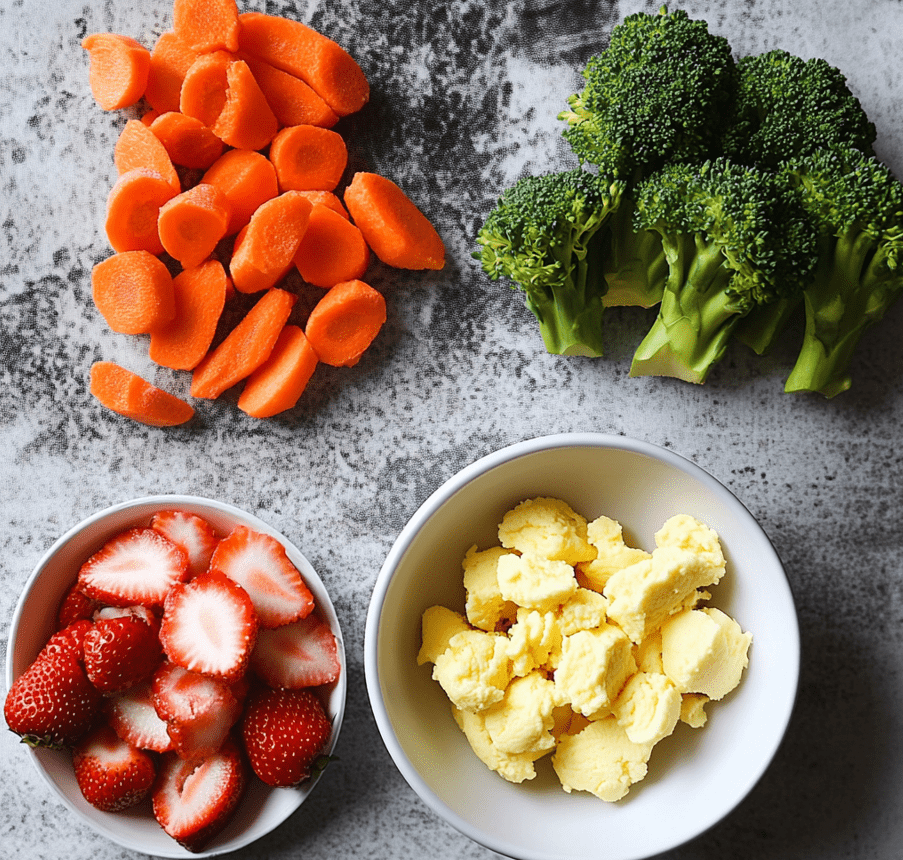
Cooked Fish:
In small doses occasionally there is omega-3 fatty acids enriched cooked fish which can be safe for kittens in some ways like one teaspoon. Just make sure it is deboned with the fins removed.
Scrambled or Boiled Egg:
They are full of amino acids and protein. A very small amount of scrambled or boiled egg can be offered as an occasional treat.
Cooked Meat:
Taurine and arginine are essential amino acids for kittens, both found in meat. A tablespoon of cooked, shredded meat (no gravy) can be a nutritious food for kittens. Always remove bones and skin.
Selected Fruits:
People really enjoy eating fruit and lots of fruits like strawberries or blueberries offer beneficial vitamins and antioxidants, but feed them extremely sparingly. Cherries, grapes, raisins and apples (which can be toxic to kittens)
Vegetables:
The diet may be supplemented with small amounts of cooked vegetables, such as broccoli (also eaten raw), carrots or pumpkin, to provide minimal source of fiber and vitamins. Except for onion and garlic – which are toxic to cats! – the rest of the plate seemed promising
Do Kittens Require Milk?
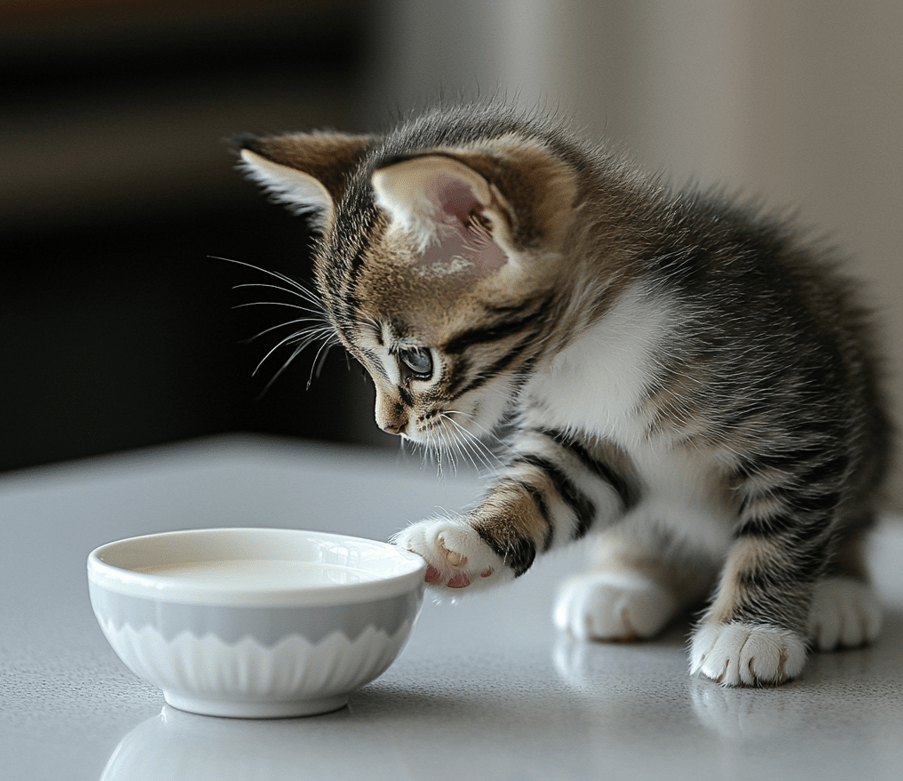
Kittens do not need milk after they are weaned from their mother’s milk (4 to 8 weeks of age) because most kittens are lactose intolerant. Lactose which is present in cow’s milk and other dairy products can cause diarrhea for many cats. This means that kittens should not be given milk in any form as part of its diet.
Feeding Kittens Wet and Dry Food at Different Ages
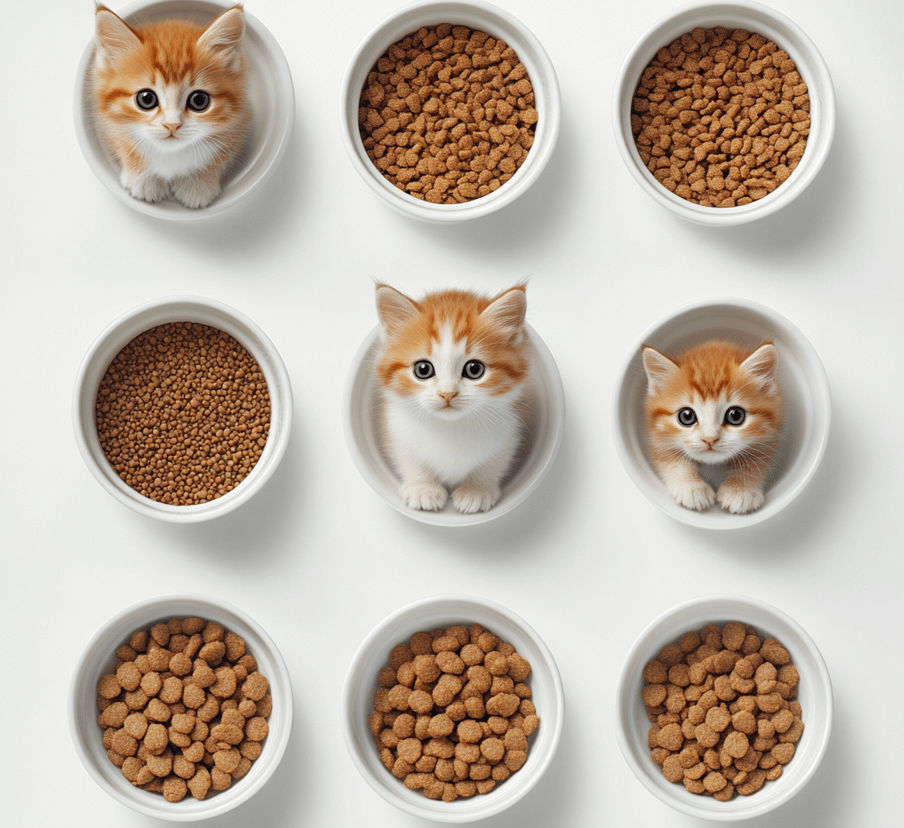
Most veterinarians recommend starting kittens on wet kitten food around 4-8 weeks of age, offering a high-quality, finely textured one to begin with. As they are moist, it helps in hydrating them in a better way and making the transition from their mother’s milk easier, especially when you start introducing dry food slowly. Cats’ baby teeth emerge between 6 to 8 weeks; wet food is more appropriate for the growing kittens. Mash-up some kitten kibble with the milk and this is fine for kittens over 8 weeks but for a younger kitten you would have to add water.
If you would like a more complete list of the pros and cons of wet cat food and dry, check out our long article on this subject. To provide all the important nutrients that ensure healthy growth, you need to feed your kitten specific, nutritionally balanced food every day as stated in feeding guidelines. For more tips about feeding twice a day and the difference between kitten food and adult cat food, read our other guides.

